While activists in Los Angeles and across the US speak out against the Keystone XL tar sands pipeline, Dave Pruett writes on its threatened environmental triple-whammy, poorly documented in the latest State Department environmental report heading toward the President’s desk. Protests are planned March 1-2 in Washington DC as part of “XL Dissent” and March 1 in Los Angeles with the Great March for Climate Action.
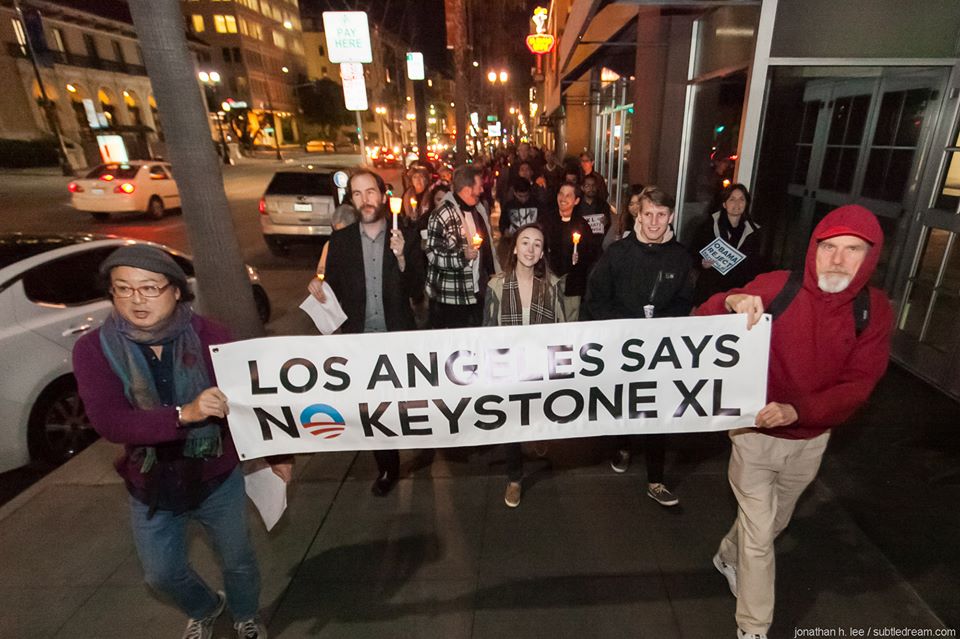

Keystone XL: An Environmental Triple Whammy
By Dave Pruett, Published in The Huffington Post
“This we know: the earth does not belong to man; man belongs to the earth. Man did not weave the web of life; he is merely a strand in it. Whatever he does to the web, he does to himself.” — Chief Seattle, 1854
On January 31, the Department of State issued its environmental assessment of TransCanada’s proposed Keystone XL (KXL) pipeline. If built, the KXL will transport petroleum from Canada’s Alberta tar sands to a neighborhood near you. At least that’s the hype. The safe bet is that the oil will be sold to the highest bidder — probably the Chinese — benefiting no one in North America save for a few oil magnates, yet subjecting heartland America to the pipeline’s environmental hazards.
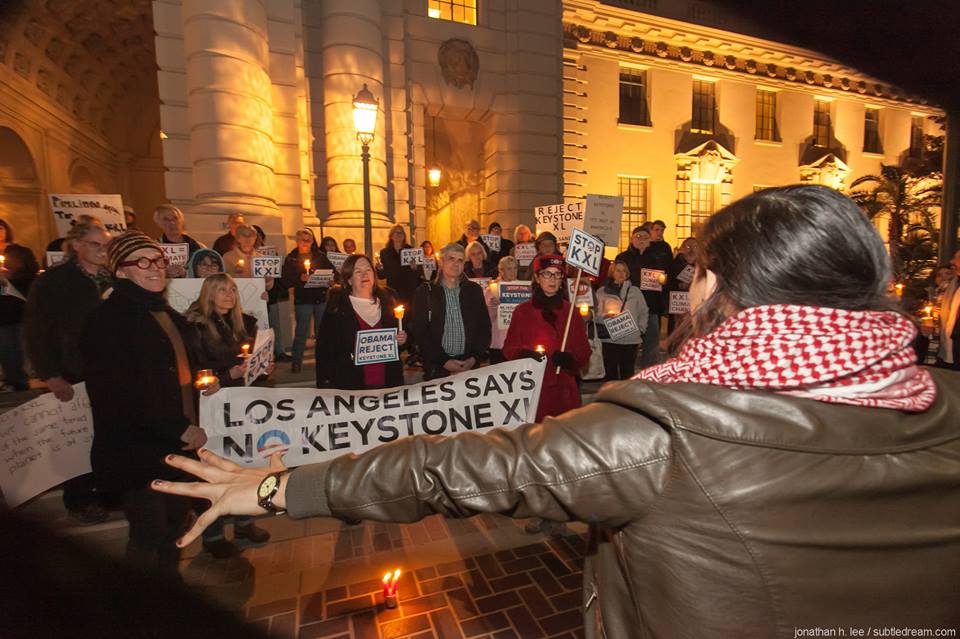

Accelerated Climate Change is NOT Inevitable
Buried deep within State’s executive summary, in the section titled “Climate Change Effects,” is the seemingly almost innocuous statement: ” … during the… operational time period, the following climate changes are anticipated to occur regardless [emphasis added] of any potential effects of the proposed Project: warmer winter temperatures; a shorter cool season; a longer duration of frost-free periods; more freeze-thaw cycles per year; warmer summer temperatures; increased number of hot days; and longer summers.” Translation: By our fossil-fuel addiction, we’ve already put the climate at risk, so why sweat another pipeline? Or to put it more crudely: We’re already screwed, so eat, drink, and be merry.
STORY: Hundreds Launch National Climate March from the Port of LA
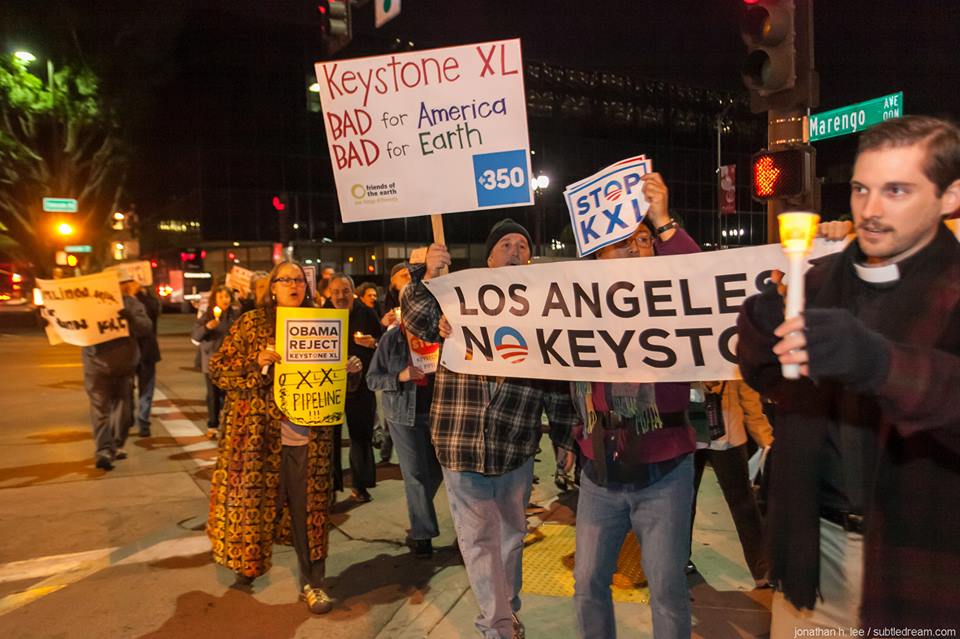

With President Obama on the cusp of a decision on whether to approve the Keystone XL tar sands pipeline, on March 1-2, hundreds of students and young people are expected to risk arrest in an act of civil disobedience at the White House to pressure President Obama to reject the project. The sit-in is expected to be the largest act of civil disobedience by young people in the recent history of the environmental movement and it will be led by just the demographic that helped propel Obama to the presidency. The protest, known as “XL Dissent,” is meant to send a clear signal to President Obama that the base that helped elect him sees Keystone XL as a decision that will define his entire legacy. — Peter Rothberg in “The Nation”
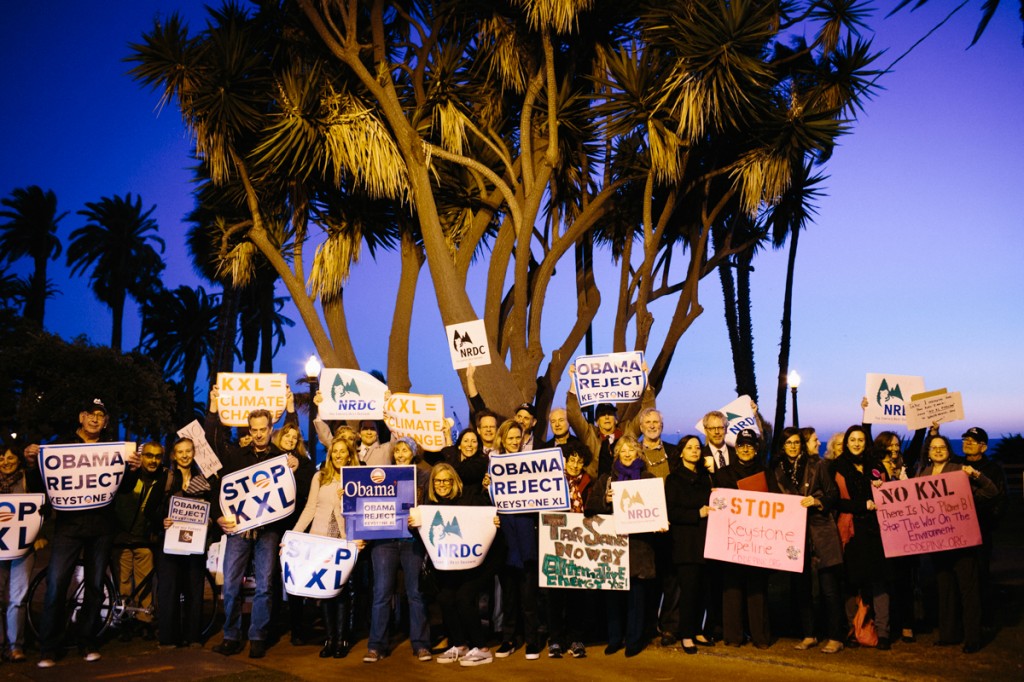

The State Department report is both negligent and misleading. It is negligent by sidestepping the main issue: accelerated climate change is NOT inevitable. It is inevitable only if we remain in denial of our addiction, as the fossil-fuel industry hopes. By major investments in renewables, many countries — Sweden, Denmark, and Germany among them — are well along the road to a carbon-free future.
The State Department report is also misleading. It fails to adequately address the degree to which the KXL will further destabilize the climate. In a New York Times editorial from May 9, 2012, James Hansen, America’s leading climate scientist, put in one sentence what the State Department assessment obscures in pages of verbiage: “If Canada proceeds, and we do nothing, it will be game over for the climate.”
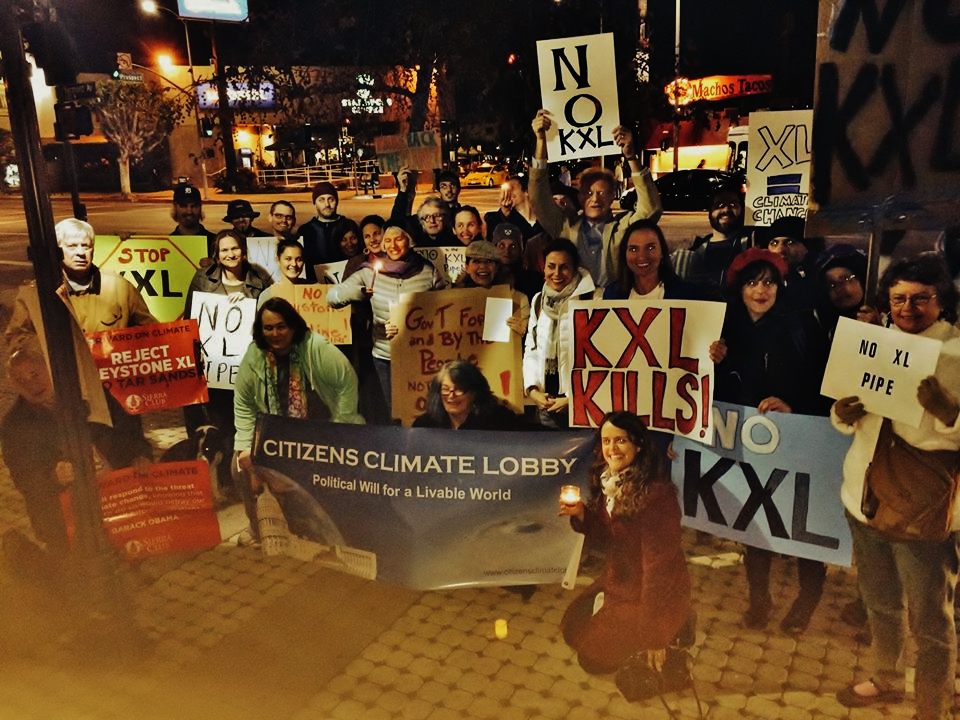

Hansen’s first climate paper appeared in 1981, when atmospheric scientists were just beginning to worry about the effects on climate of the atmospheric carbon dioxide (CO2) that has accumulated since the industrial revolution. Ice core samples reveal that atmospheric concentrations of CO2, although subject to wide natural fluctuations, have remained below 300 parts per million (ppm) for most of the last 650,000 years. By 1988, however, just a few years subsequent to Hansen’s wake-up call, atmospheric CO2 concentrations had risen abruptly to 350 ppm, the upper limit at which we are relatively certain to avoid catastrophic climate effects. On May 10 of last year, Mauna Loa’s climate laboratory recorded — for the first time ever — CO2 concentrations of 400 ppm. Canada’s tar sands contain enough carbon to raise atmospheric levels another 120 ppm. Climate predictions indicate that CO2 concentrations in excess 500 ppm almost certainly spell a runaway climate.
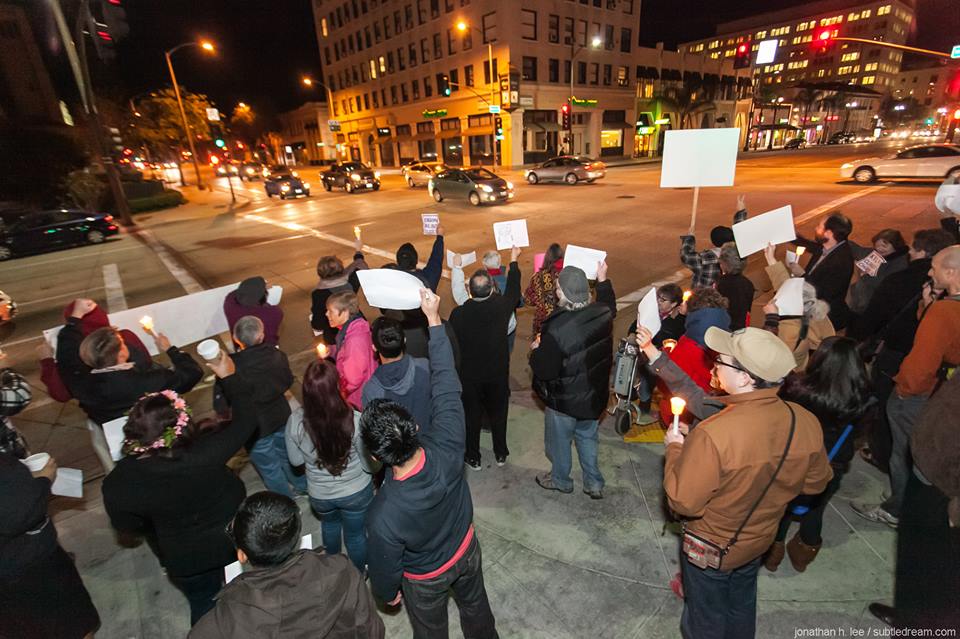

Converting tar-sands oil into usable fuels requires a huge amount of energy, and much of the black gunk that’s refined out of the crude in this process ends up as petroleum coke. Petcoke is like concentrated coal – denser and dirtier than anything that comes out of a mine. It can be burned just like coal to produce power, but petcoke emits up to 15 percent more climate pollution. “Literally, in terms of climate change,” says Stockman, “it’s the dirtiest fuel on the planet.” And US energy companies have seized on the substance as a coal alternative for export. — Tim Dickinson in “Rolling Stone”
The crux of the issue is not building the KXL, although the pipeline itself is environmentally problematic. (For example, recall the devastating 2013 rupture in Mayflower, Arkansas, of an ExxonMobil pipeline carrying Canadian heavy crude.) The crux is that the earth’s atmosphere cannot tolerate the additional carbon that KXL will make available. That’s environmental whammy number one.
httpvh://youtu.be/t7hTATM4i_8
“Mother Earth” from Neil Young’s “Honour The Treaties” tour.
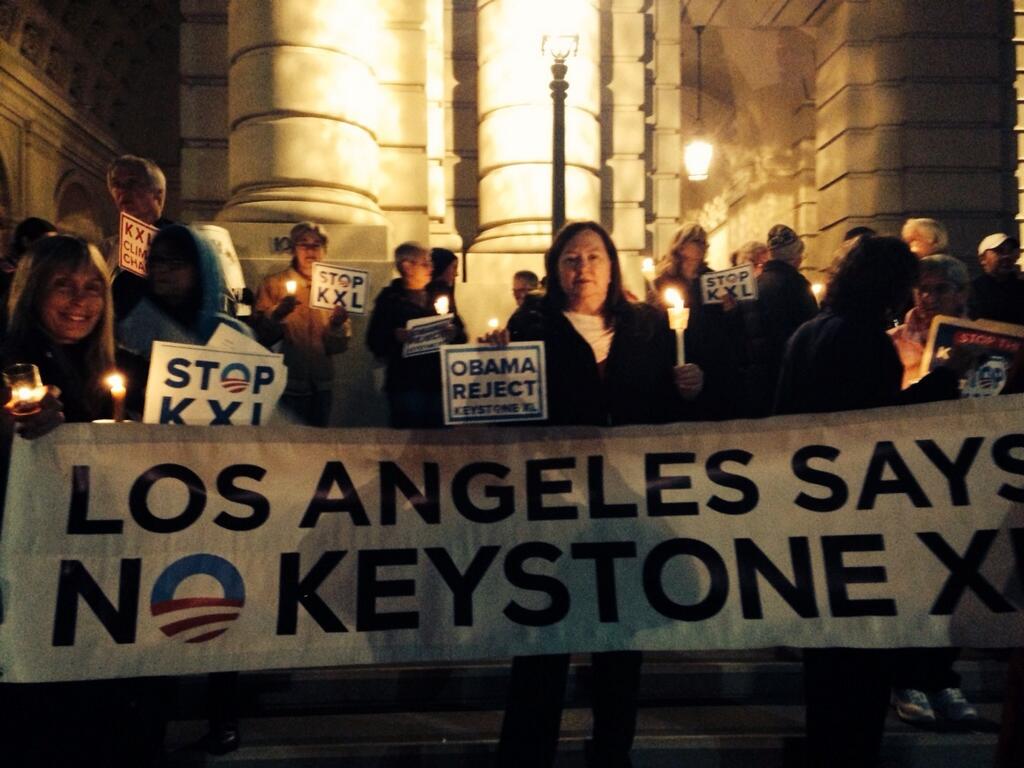

Extreme Oil = Extreme Gas
Canada’s tar sands contain the dirtiest kind of oil, “extreme oil,” accessible only by extreme measures. In the early days of the petroleum industry, the energy of one barrel of oil could yield 100 barrels in return. That is, the EROEI index (Energy Return on Energy Invested) was 100:1. Cheap oil has long since been tapped. Today’s average EROEI is about 10:1.
But tar sands oil is yet harder to extract, with an EROEI between 3:1 and 5:1. To loosen the viscous heavy crude or bitumen, steam is forced underground. Current practices exploit plentiful and relatively cheap natural gas to generate steam. But, natural gas is plentiful only because of hydraulic fracturing (fracking). With each passing day, more of fracking’s devastating consequences to air and groundwater quality come to light. Neither is natural gas as clean as it’s been portrayed. Methane is a far more potent greenhouse gas than CO2. With fracking, methane leakage into the atmosphere is virtually inevitable. Therein lies environment whammy number two: Extreme oil necessitates extreme gas.
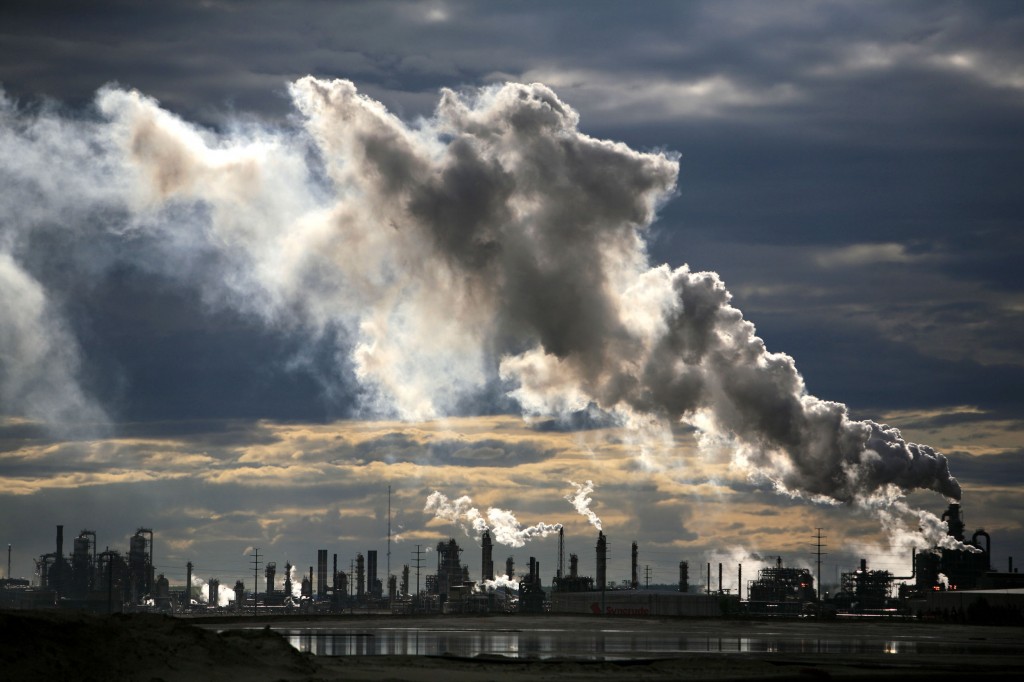

Earth is Our Principal; What it Produces is Interest
Finally, there’s environmental whammy number three: the wholesale destruction of large swaths of boreal forest to provide access to the tar sands. Not only are these pristine forests home to many fellow creatures, they are also carbon sinks whose destruction will release yet more carbon into the atmosphere.
There’s a certain level of madness in using ever more extreme technologies to wring ever-dwindling supplies of black gold from Mother Earth. The safest way to insure that one’s retirement nest egg lasts a lifetime is to live only on the interest. By analogy, the Earth is our principal; what it produces is interest. The surest way to preserve the future is to preserve the earth. Destroy the principal and there will be no further interest payments.
“It may seem impossible to imagine a technologically advanced society could choose, in essence, to destroy itself,” writes Elizabeth Kolbert in Field Notes from a Catastrophe, “but that is what we are now in the process of doing.”
Fortunately, 77,000 Americans have pledged themselves to nonviolent civil disobedience to stop the KXL, even if the president is shortsighted enough to approve it. Make that 77,001.
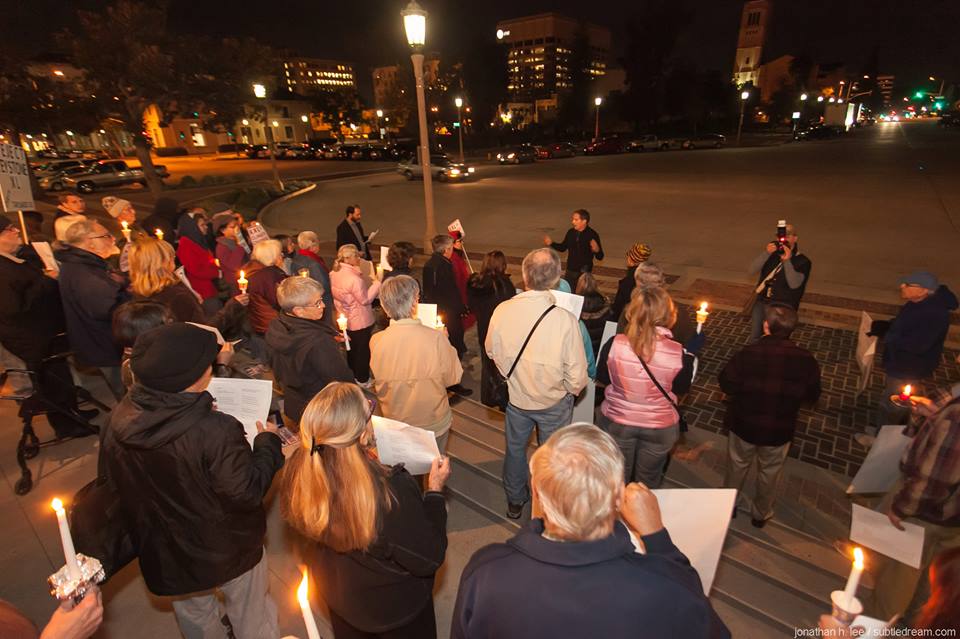

Dave Pruett is a former NASA researcher and now Emeritus Professor of Mathematics, James Madison University. He is grateful for the insights and contributions of Doug Hendren and the inspiration of Occupy Harrisonburg and the Climate Action Alliance of the Valley. Follow Dave Pruett on Twitter.
Thanks to Jonathan H. Lee from Subtle Dream Photography. For the complete set on the Pasadena Rally, click here.
httpvh://youtu.be/EyJ70Dqz5cQ
Take the Pledge of Resistance…









Pingback: 'Above All Else': Fighting the KXL in Texas | WilderUtopia.com